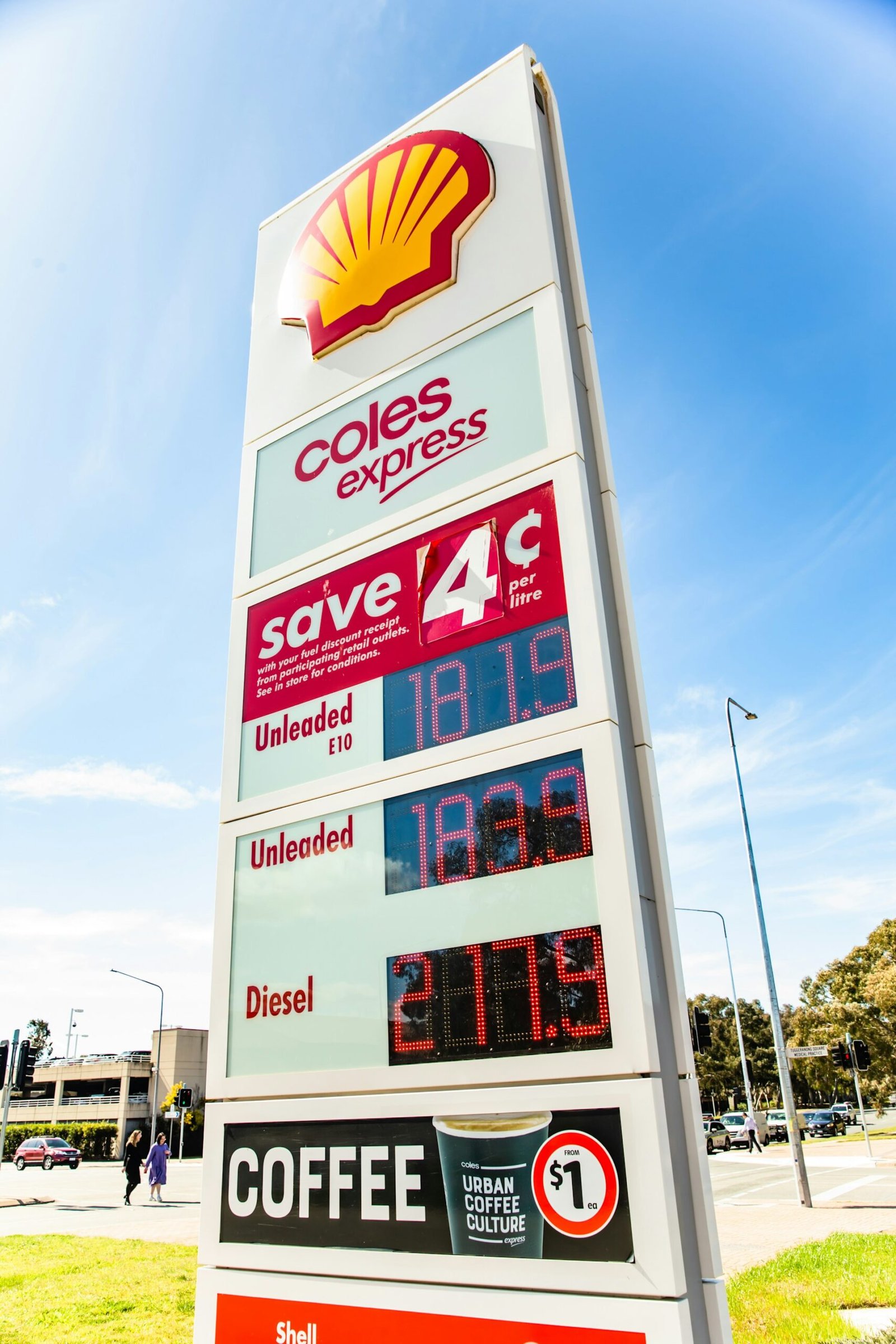Introduction to Customer Lifetime Value (CLV)
Customer Lifetime Value (CLV) is a critical metric in the business world, representing the predicted net profit attributed to the entire future relationship with a customer. Essentially, it estimates the total revenue a business can expect from a single customer account over the duration of their engagement. This metric provides valuable insights into customer behavior and profitability, allowing businesses to make more informed decisions regarding marketing, sales, and customer service investments.
The significance of CLV cannot be overstated. It serves as a guide for resource allocation, ensuring that businesses invest in customer segments that offer the highest returns. By understanding and optimizing CLV, companies can tailor their strategies to enhance customer retention, foster loyalty, and drive repeat purchases. This approach not only improves immediate revenue but also contributes to sustainable, long-term business growth.
Maximizing Customer Lifetime Value is particularly beneficial for long-term profitability. A higher CLV implies that the company is successfully retaining customers, reducing churn rates, and enhancing customer satisfaction. These factors collectively lead to lower acquisition costs and higher revenue per customer. Furthermore, businesses that focus on increasing CLV are often better positioned to weather economic downturns, as they can rely on a stable and loyal customer base.
In the competitive landscape of today’s market, leveraging CLV as a strategic tool can provide a significant edge. It encourages businesses to prioritize quality over quantity, focusing on nurturing existing customer relationships rather than merely expanding their customer base. By understanding the importance of Customer Lifetime Value, companies can implement strategies that not only enhance customer satisfaction but also drive long-term profitability and growth.
Understanding the Factors Influencing CLV
Customer lifetime value (CLV) is a crucial metric for any business aiming to optimize its long-term profitability. Several key factors contribute to determining CLV, each playing a significant role in shaping the overall value that a customer brings to the business over time. Understanding and effectively managing these factors can significantly enhance a company’s ability to maximize CLV.
One of the primary factors influencing CLV is customer acquisition cost (CAC). This refers to the total expense incurred to acquire a new customer, including marketing, advertising, and sales expenditures. A lower CAC relative to the revenue generated from a customer can substantially increase CLV. Efficiently managing acquisition costs ensures that the resources spent on attracting new customers are balanced against the long-term value those customers bring.
Purchase frequency is another critical determinant of CLV. It measures how often a customer makes purchases over a specific period. Higher purchase frequency usually indicates greater customer engagement and loyalty, which in turn boosts CLV. Businesses can encourage repeat purchases through personalized marketing, loyalty programs, and exceptional customer service, thereby enhancing purchase frequency and overall customer value.
Average order value (AOV) also plays a vital role in calculating CLV. AOV is the average amount spent by a customer per transaction. Strategies such as upselling, cross-selling, and offering bundled products can effectively increase AOV. By encouraging customers to spend more per transaction, businesses can enhance the revenue generated from each customer, thereby improving CLV.
Lastly, customer retention rate is a pivotal factor in maximizing CLV. This metric indicates the percentage of customers who continue to do business with a company over a given period. Higher retention rates generally lead to a higher CLV, as retaining existing customers is often more cost-effective than acquiring new ones. Implementing effective retention strategies, such as providing excellent customer support and addressing customer feedback proactively, can significantly improve retention rates and, consequently, CLV.
In summary, by carefully analyzing and optimizing customer acquisition costs, purchase frequency, average order value, and customer retention rates, businesses can effectively maximize customer lifetime value. This holistic approach not only enhances profitability but also fosters long-term customer relationships.
Calculating Customer Lifetime Value
Understanding the calculation of Customer Lifetime Value (CLV) is pivotal for businesses aiming to bolster their long-term profitability. CLV can be approached through various methodologies, broadly categorized into historical and predictive calculations. Each method provides unique insights, helping organizations tailor strategies to enhance customer retention and overall value.
The historical CLV formula focuses on past customer behavior, utilizing previous purchase data to estimate future value. The basic historical CLV formula is:
CLV = (Average Purchase Value) x (Average Purchase Frequency) x (Customer Lifespan)
This straightforward approach offers a snapshot of customer value based on real transaction data, making it particularly useful for businesses with substantial historical data.
Predictive CLV, on the other hand, leverages advanced analytics and machine learning to forecast future customer behavior. This method considers variables such as purchase frequency, average order value, and customer churn rates. A common predictive CLV formula is:
Predictive CLV = (Customer Value) x (Customer Lifespan)
Where Customer Value can be further broken down into:
Customer Value = (Average Purchase Value) x (Purchase Frequency)
Predictive models often provide a more dynamic and forward-looking view of customer value, allowing businesses to preemptively address potential issues and capitalize on emerging opportunities.
To illustrate these calculations, consider a case study of a subscription-based service. By analyzing historical data, the company found that their average customer spends $50 per month and maintains their subscription for 24 months. Using the historical CLV formula:
CLV = $50 x 12 x 2 = $1,200
For predictive CLV, the company could use machine learning models to incorporate additional factors like seasonal trends and customer engagement metrics, potentially revealing a higher or lower projected CLV.
By effectively calculating CLV, businesses can make more informed decisions on marketing spend, customer acquisition, and retention strategies, ultimately driving sustainable growth.
Strategies to Increase Customer Lifetime Value
Maximizing Customer Lifetime Value (CLV) is paramount for any business aiming for sustainable growth and profitability. To achieve this, several strategies can be employed, each tailored to enhance the customer’s overall experience and long-term engagement with the brand.
Improving customer service is a foundational strategy. Exceptional customer service fosters trust and loyalty, leading to repeat purchases and extended customer relationships. Businesses should invest in comprehensive training for customer service representatives, ensuring they are well-equipped to handle inquiries and resolve issues promptly. Implementing robust feedback mechanisms can also help in identifying areas of improvement, thus continuously elevating the service quality.
Enhancing product quality is equally critical. Customers are more likely to remain loyal to a brand that consistently delivers high-quality products. Regularly updating and refining product offerings based on customer feedback and market trends can ensure the products meet or exceed customer expectations. Moreover, adopting stringent quality control processes can minimize defects and enhance customer satisfaction.
Implementing loyalty programs can significantly boost CLV by incentivizing repeat purchases. These programs can range from point-based systems to exclusive member benefits. The key is to create a loyalty program that is both appealing and rewarding to the customer. Regularly updating the rewards and keeping the program engaging can maintain customer interest and participation.
Personalized marketing involves tailoring marketing efforts to individual customer preferences and behaviors. Utilizing data analytics and customer insights, businesses can craft personalized messages and offers that resonate with the customer. This approach not only enhances the customer experience but also increases the likelihood of additional purchases.
Lastly, upselling and cross-selling techniques can effectively increase the average transaction value, thereby enhancing CLV. Training sales teams to identify opportunities for upselling and cross-selling, without being overly pushy, can lead to higher sales. Additionally, personalized product recommendations based on past purchases can encourage customers to explore and buy more.
By integrating these strategies, businesses can create a more engaging and satisfying customer journey, ultimately driving higher Customer Lifetime Value.
Leveraging Data and Analytics for Better CLV
In the contemporary business landscape, leveraging data and analytics has become pivotal in understanding and enhancing customer lifetime value (CLV). By analyzing customer data, businesses can unearth valuable insights into consumer trends, preferences, and behaviors, which can significantly inform strategic marketing and retention efforts.
Customer Relationship Management (CRM) systems play a crucial role in this data-driven approach. These systems gather and manage comprehensive customer data, enabling businesses to segment their audience effectively. By segmenting customers based on their purchasing patterns, businesses can tailor personalized marketing campaigns that resonate more deeply with specific customer groups. This targeted approach not only improves customer engagement but also fosters long-term loyalty.
Moreover, predictive analytics, an integral part of modern CRM systems, can forecast future customer behaviors based on historical data. This predictive capability allows businesses to anticipate customer needs and preferences, thereby proactively addressing potential issues and enhancing the overall customer experience. For instance, by identifying customers who are likely to churn, companies can implement timely retention strategies, such as personalized offers or loyalty programs, to retain these valuable customers.
Analytical tools also extend beyond CRM systems. Advanced data analytics platforms can integrate various data sources, providing a holistic view of customer interactions across multiple channels. This multi-dimensional analysis helps businesses understand the complete customer journey, from initial engagement to eventual purchase and beyond. By mapping out this journey, companies can identify critical touchpoints where intervention could significantly boost CLV.
In addition, A/B testing analytics can offer insights into the effectiveness of different marketing strategies. By comparing the performance of various campaigns, businesses can determine which tactics yield the highest return on investment and refine their approaches accordingly. This iterative process of testing and refining ensures that marketing efforts are continually optimized for maximum impact.
Ultimately, the strategic use of data and analytics empowers businesses to make informed decisions that drive long-term customer value. By embracing these tools, companies can not only enhance customer satisfaction but also secure a competitive edge in the market.
Case Studies: Successful CLV Maximization
Examining real-world examples offers valuable insights into how companies have successfully maximized their customer lifetime value (CLV). Here, we present three case studies that illustrate the strategies employed, the challenges encountered, and the outcomes achieved.
Case Study 1: Starbucks
Starbucks has long been a leader in leveraging data-driven strategies to enhance CLV. By utilizing their loyalty program, Starbucks Rewards, the company collects comprehensive data on customer preferences and purchasing habits. This allows Starbucks to personalize offers, tailor marketing campaigns, and foster a deeper connection with their customers. One significant challenge they faced was maintaining customer engagement amidst fierce competition. However, by continuously innovating their rewards program and integrating it with mobile payment options, Starbucks achieved a notable increase in customer retention and average transaction value.
Case Study 2: Amazon
Amazon’s success in maximizing CLV can be attributed to its relentless focus on customer experience and data analytics. Through the use of personalized recommendations, Amazon ensures that customers are presented with relevant product suggestions, thereby increasing the likelihood of repeat purchases. Additionally, Amazon Prime, the company’s subscription service, enhances customer loyalty by offering benefits such as free shipping, exclusive deals, and access to streaming services. The main challenge for Amazon was managing the logistics of delivering on their promises while keeping operational costs low. By investing in technology and optimizing their supply chain, Amazon has significantly boosted CLV, maintaining a dominant position in the e-commerce sector.
Case Study 3: Sephora
Sephora has excelled in maximizing CLV through a combination of personalized customer experiences and a robust loyalty program. The Beauty Insider program segments customers into different tiers based on their spending, offering tailored rewards and exclusive access to events. Sephora also leverages advanced data analytics to understand customer behavior and preferences, enabling them to provide personalized product recommendations and targeted marketing. A significant challenge for Sephora was integrating online and offline customer data to create a seamless experience. By investing in omnichannel strategies and leveraging customer insights, Sephora has successfully increased both customer retention and average spend per customer.
These case studies demonstrate that by focusing on personalized customer experiences, leveraging data analytics, and innovating loyalty programs, companies can effectively maximize their customer lifetime value. Each of these companies faced unique challenges but overcame them through strategic investments and a customer-centric approach.
Challenges in Maximizing CLV and How to Overcome Them
Maximizing customer lifetime value (CLV) presents numerous challenges that businesses must navigate to ensure sustained customer loyalty and profitability. One of the primary obstacles is high customer churn rates. Churn occurs when customers cease their engagement with a brand, often due to dissatisfaction or better offers from competitors. To counteract this, companies should implement robust customer retention strategies, such as personalized communication, loyalty programs, and exceptional customer service. By understanding and addressing the reasons for churn, businesses can significantly increase CLV.
Market competition also poses a significant challenge. In highly competitive markets, customers have a plethora of choices, making it crucial for businesses to differentiate themselves. Conducting market research to understand competitor strategies and customer preferences is essential. Leveraging unique selling propositions (USPs) and continuously innovating products or services can make a brand more appealing. Effective marketing campaigns that highlight these USPs can attract and retain customers, thereby enhancing their lifetime value.
Data management issues further complicate efforts to maximize CLV. Inaccurate or fragmented data can lead to poor decision-making and missed opportunities. Implementing a robust Customer Relationship Management (CRM) system is vital for consolidating and analyzing customer data. A CRM system allows businesses to track customer interactions, preferences, and behaviors, enabling more targeted and effective marketing strategies. Additionally, investing in data analytics tools can provide deeper insights into customer trends and help predict future behaviors, aiding in the formulation of strategies to maximize CLV.
Another challenge is maintaining consistent customer engagement over time. Regular engagement through personalized content, email marketing, and social media interactions is crucial for keeping customers interested. Providing value through educational content, exclusive offers, and responsive customer support can strengthen the customer relationship. By fostering a sense of community and belonging, businesses can enhance customer loyalty and, consequently, their lifetime value.
Addressing these challenges requires a strategic and multifaceted approach. By focusing on retention, differentiation, data management, and consistent engagement, businesses can overcome obstacles and maximize the lifetime value of their customers. Ultimately, the goal is to create lasting relationships that benefit both the customer and the business.
Future Trends in CLV Maximization
As the business landscape continues to evolve, so too do the strategies for maximizing Customer Lifetime Value (CLV). Emerging trends and technologies are poised to significantly impact how companies understand, measure, and enhance CLV. One of the most transformative influences is the integration of artificial intelligence (AI) and machine learning. These technologies enable businesses to analyze vast amounts of customer data in real-time, providing deeper insights into customer behavior and preferences. By leveraging AI, companies can predict future purchasing patterns, identify at-risk customers, and tailor marketing efforts more precisely, thereby enhancing overall customer retention and value.
Another key trend is the advancement in personalization techniques. Modern consumers expect tailored experiences that resonate with their unique needs and preferences. Advanced personalization, powered by sophisticated algorithms, allows businesses to deliver highly relevant content, offers, and product recommendations. This not only increases customer satisfaction but also encourages repeat purchases, thereby boosting CLV. For instance, e-commerce platforms using personalized recommendation engines have reported significant increases in sales and customer engagement.
The increasing importance of customer experience (CX) cannot be overstated. In a competitive market, superior customer experience has become a critical differentiator. Companies that prioritize CX are more likely to foster customer loyalty and long-term engagement. Implementing omnichannel strategies ensures consistent and seamless interactions across various touchpoints, enhancing the overall customer journey. Moreover, investing in customer feedback systems helps businesses identify pain points and areas for improvement, further optimizing the customer experience.
Looking ahead, experts predict that businesses will continue to refine their CLV strategies by embracing these emerging trends. AI and machine learning, advanced personalization, and a heightened focus on customer experience are set to redefine how companies maximize customer lifetime value. By staying ahead of these trends, businesses can better anticipate customer needs, deliver exceptional experiences, and ultimately, drive sustained growth.



